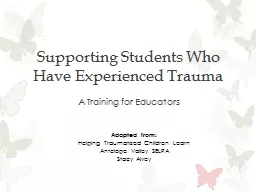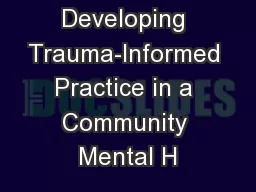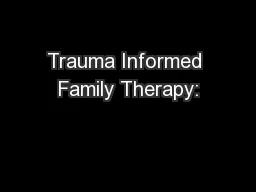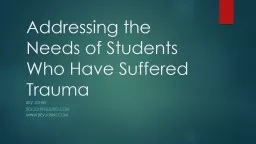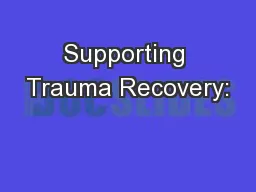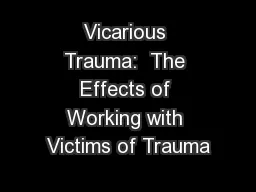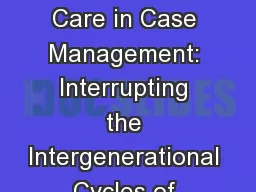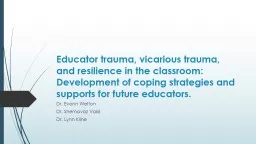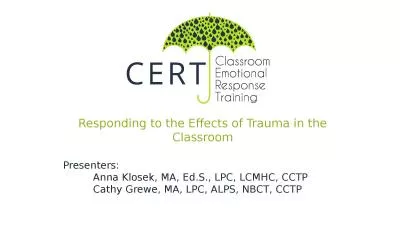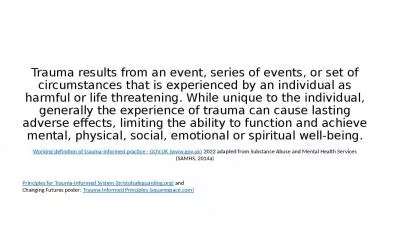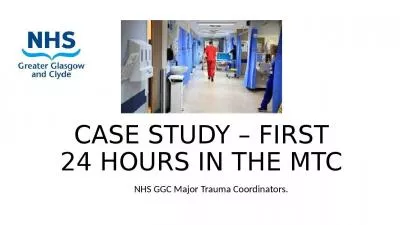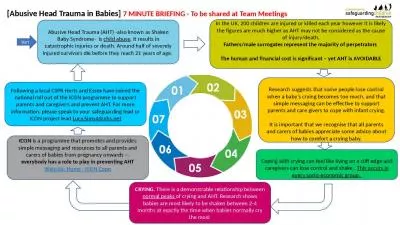PPT-Supporting Students Who Have Experienced Trauma
Author : alida-meadow | Published Date : 2019-06-29
A Training for Educators Adapted from Helping Traumatized Children Learn Antelope Valley SELPA Stacy Alvey 2 VIDEO Through Our Eyes Children Violence and TraumaIntroduction
Presentation Embed Code
Download Presentation
Download Presentation The PPT/PDF document "Supporting Students Who Have Experienced..." is the property of its rightful owner. Permission is granted to download and print the materials on this website for personal, non-commercial use only, and to display it on your personal computer provided you do not modify the materials and that you retain all copyright notices contained in the materials. By downloading content from our website, you accept the terms of this agreement.
Supporting Students Who Have Experienced Trauma: Transcript
Download Rules Of Document
"Supporting Students Who Have Experienced Trauma"The content belongs to its owner. You may download and print it for personal use, without modification, and keep all copyright notices. By downloading, you agree to these terms.
Related Documents

